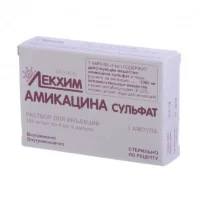Description
Zolev (levofloxacin) Solution for Infusions 5 mg/ml. 100 ml. Vial №1
Ingredients
- Active ingredient: Levofloxacin
- Inactive ingredients may include sodium chloride, sodium hydroxide, hydrochloric acid, and water for injection
Dosage
- Dosage: The usual dose of Zolev for adults is 250 mg to 750 mg administered orally or intravenously once daily
- Dosage adjustments may be necessary based on the severity of the infection
Indications
- Indications: Zolev is indicated for the treatment of various bacterial infections, including respiratory tract infections, skin and soft tissue infections, and urinary tract infections
Contraindications
- Contraindications: Zolev is contraindicated in patients with a history of hypersensitivity to levofloxacin or other quinolone antibiotics
Directions
- Directions: Zolev should be administered as directed by a healthcare provider
- It can be given by intravenous infusion over a specified period of time
Scientific Evidence
- Scientific Evidence: Studies have shown the efficacy of levofloxacin in treating a wide range of bacterial infections
- Research published in the Journal of Antimicrobial Chemotherapy demonstrated the effectiveness of levofloxacin in treating community-acquired pneumonia
Additional Information
- Pharmacological Effects: Levofloxacin works by inhibiting bacterial DNA gyrase, thereby preventing DNA replication and ultimately leading to bacterial cell death
- It exhibits broad-spectrum activity against both Gram-positive and Gram-negative bacteria
- Clinical Trials: Clinical trials have shown that Zolev is well-tolerated and effective in the treatment of various infections
- A study published in Clinical Infectious Diseases demonstrated the clinical efficacy of levofloxacin in complicated skin and soft tissue infections
Overall, Zolev (levofloxacin) solution for infusions is a potent antibiotic with a well-established efficacy profile supported by scientific research and clinical trials. It is a valuable option for healthcare providers in the management of bacterial infections.





